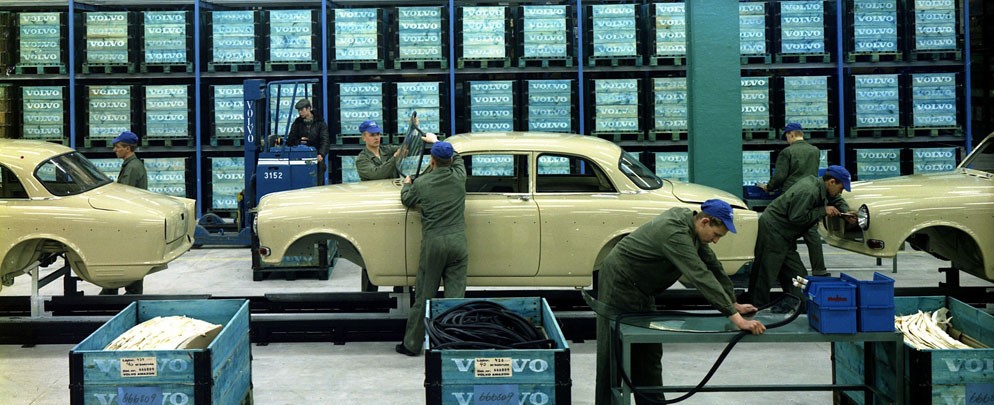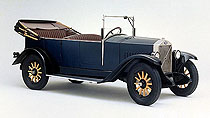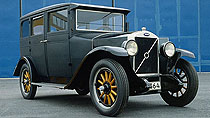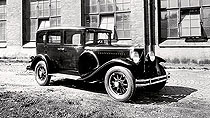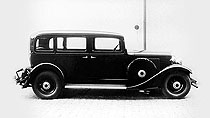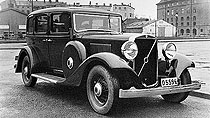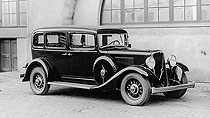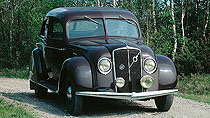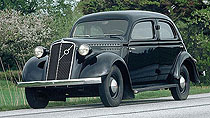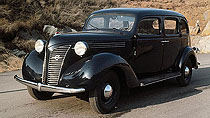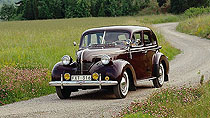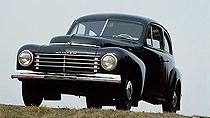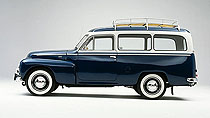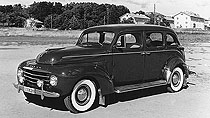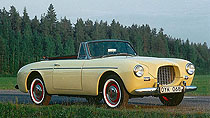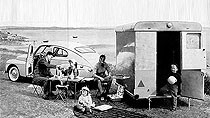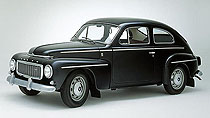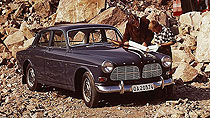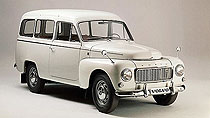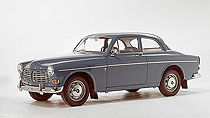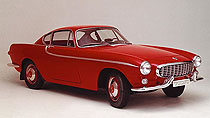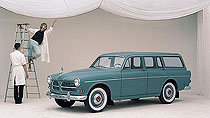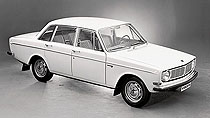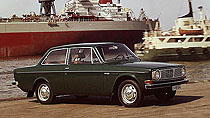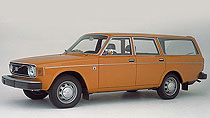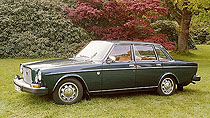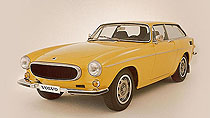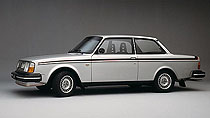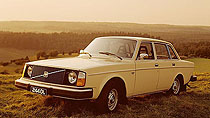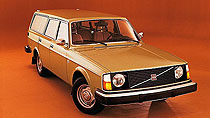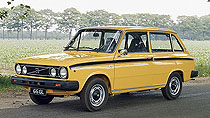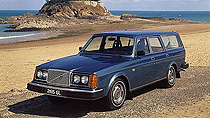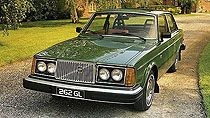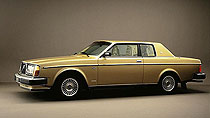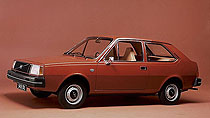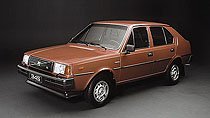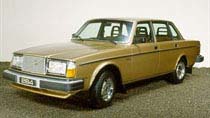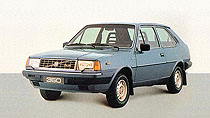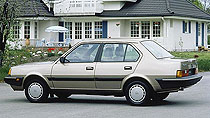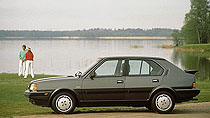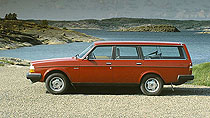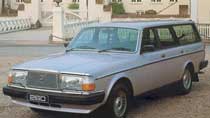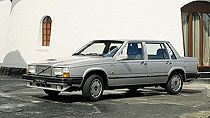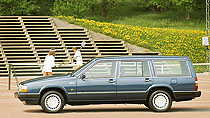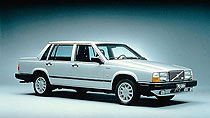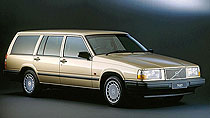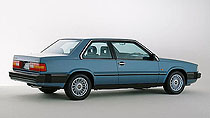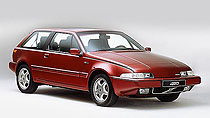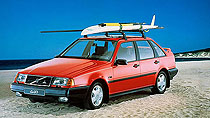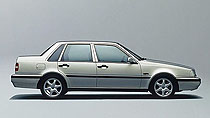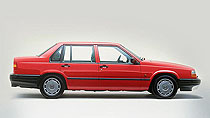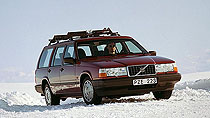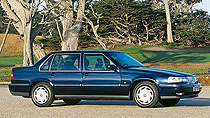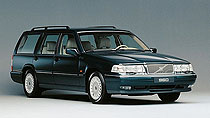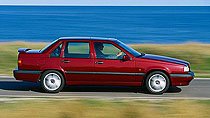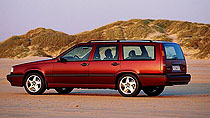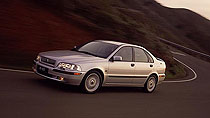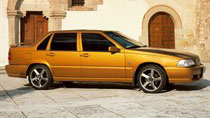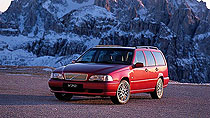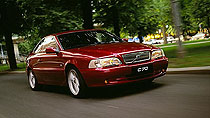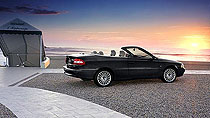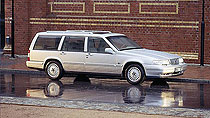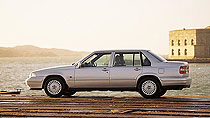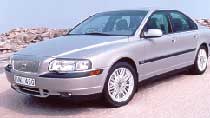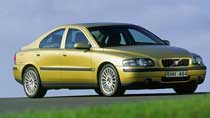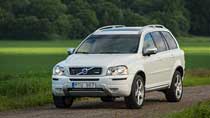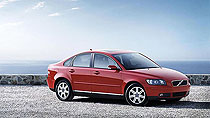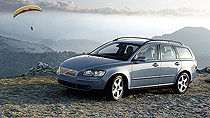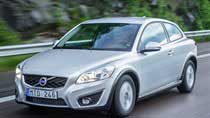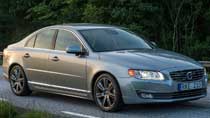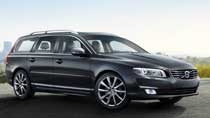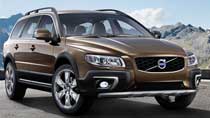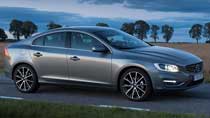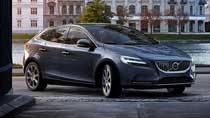
History of the Volvo Car
Source: Volvo Car Corporation.
Volvo, Latin for "I roll", was born on April 14th, 1927 when the first car "Jakob" left the factory in Gothenburg, Sweden.
Founded by Assar Gabrielsson and Gustaf Larsson, the company was formed on a background of quality and safety which were both of paramount importance, a concept that still applies to the Volvo cars of today.
The fledgling company produced both closed top and cabriolet models of their new four-cylinder OV4 and PV4 models, which were constructed to better withstand the harsh Swedish climate, than contemporary US imports. Both carried the Swedish symbol for iron attached to a diagonal piece if metal on the front grille – another aspect of Volvo’s heritage that can still be seen on today’s models.
In 1929 a six-cylinder PV651 model had been introduced which was both longer and wider than the Jakob. Its success helped the company to purchase its engine supplier and buy its first factory and by the end of 1931 return it’s first dividend to shareholders.
The first production milestone of 10,000 Volvo’s was reached in May 1932 and it was not long before Volvo dealers were asking the company to develop a more inexpensive car "for the people". This was the PV 51 model of 1936, similar to the more expensive PV36 in design, but smaller in size and less well equipped.
The Second World War significantly restricted Volvo’s production of cars, but by the autumn of 1944 the company had unveiled one of its most significant cars – the PV444. Volvo’s first "true" small car, its stylish design combined American flair with European size and it was an instant success. The PV444 and the PV544 would dominate Volvo production through to the mid 1960’s and be the first models to gain Volvo a slice of the important US market during the 1950’s.
Another popular model was the Volvo 120 introduced in 1956 and often called the Amazon.
Safety features and accident protection were a key factor in this cars design and this was enhanced even further in 1959 when both the Amazon and PV544 were equipped with three-point safety belts – a world first and an invention pioneered by Volvo’s head of safety engineering, Nils Bohlin.
Volvo’s first sports car was the “Sport” or P1900 launched in 1956 but this had a short production run and was replaced by the hugely successful P1800 in 1960. Considered to be an excellent touring car with it’s sleek coupe lines, the P1800 went on to find fame in “The Saint” TV series with Roger Moore behind the wheel.
By 1964 Volvo had opened a new production plant in Torslanda, Sweden capable of producing up to 200,000 cars a year and by 1966 the Volvo 140 family was introduced firstly as a saloon and later as an estate, helping to cement a family market that Volvo was rapidly claiming as its own.
Innovations in safety and environmental care continued apace with crumple zones, rear facing child seats, collapsible steering columns, side collision protection and the three-way catalytic converter with Lambdasond all being introduced on Volvo’s in the late 1960’s and early 1970’s.
The Volvo 240 range replaced the 140 with even higher levels of safety and quality and was joined by the smaller Volvo 340 models from Holland to take Volvo’s sales past the 4 million mark by the end of the 1970’s.
In turn the Volvo 700 series of 1982 took Volvo yet another step into the exclusive market for personalised high-quality cars. Later in the decade the 340 was replaced by the Volvo 400 series which won plaudits for its roadholding and safety as well as its generous amount of interior space.
A completely new and different Volvo was launched to the world in June 1991. The Volvo 850 was Volvo’s first front wheel drive executive car, with a transverse, five-cylinder engine. Its high level of safety combined with real driving pleasure won the car many independent awards.
The proposed merger with Renault fell through in its final stages in 1993 leaving Volvo as one of the few remaining independent car manufacturers. This marked a key turn in the company’s plans and paved the way for Volvo’s new dynamic product strategy with the introduction in 1996 of the sleek and more rounded designs of the Volvo S40 and V40.
They, like the Volvo C70 coupe and convertible that were introduced later that year, were cars that combined all of Volvo’s traditional values of safety, environmental care with sporty, elegant and exciting design and engineering.
With the Volvo S80 sedan of 1998 and the V70 wagon of 1999, all of this new engineering and design was brought together in a cars that both Gustaf Larson and Assar Gabrielson would have recognised as Volvo’s that represented their wishes for safe, quality products, but that can hold a fascination and desire for customers in today’s sophisticated car market.
Between 14 April 1927 and 28 February 2025 Volvo Cars produced 25,238,072 cars. *This is an estimate as some early production figures may not be accurate. For current models numbers refer to the retail sales by Model Year.
A Volvo Moment: Asleep behind the wheel.
In the 1950s, it was a selling point if a car was convertible for sleeping purposes, and this advantage would be highlighted in advertising. Hotel rooms were expensive, and if a business traveller or a family on holiday could sleep in their car they could make big savings. ‘The PV544 is just as comfortable to sleep in as it is to drive,’ said a Swedish advertising film from 1958 - to name but one example.
1920's
1930's
1940's
1950's
1960's
1970's
1980's
1990's
2000's
2010's
Legal | Privacy | Contact Us | Search | Site Map
Volvo Owners' Club Limited® 1962-2025
